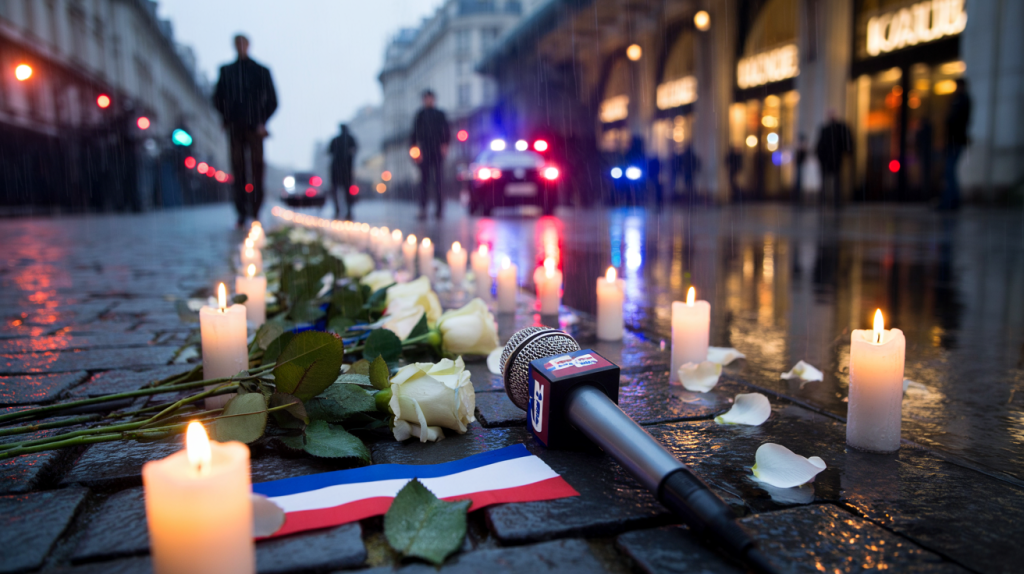One night split a city in two. On November 13, 2015, a coordinated wave of attacks struck Paris and Saint-Denis, killing 130 people, including 90 at the Bataclan concert hall. Those minutes of terror have since lived on through testimonies that explain, detail, and fix the memory of what happened.
Readers come looking for clarity. What do these accounts actually say, how do they fit into the established timeline, and where can verified words be found without distortion. The facts are anchored: Islamic State claimed responsibility, three gunmen attacked the Bataclan during a rock concert, police launched the final assault after midnight, and a historic trial ended in June 2022. The rest is the human thread that holds all of this together.
Bataclan testimony, November 13, 2015: what survivors recount
Patterns emerge across dozens of accounts. The first bursts of automatic fire. The scramble to the floor, under seats, behind the bar. Whispered phone messages sent in the dark. Then the long wait, minutes stretching like hours, until the police intervention breaks the silence.
Descriptions stay precise because the body remembers. Many mention the moment the music stopped, the smell of smoke, the directions taken to reach the emergency exits, and the sudden calm after the last shots. Medical first responders inside and around the venue described triage choices made on the spot, guided by simple rules learned in training but tested by chaos.
These testimonies also map the geography of the place. Balcony versus pit. The narrow corridor to the street. The positions of the doors matters because it explains both survival paths and the work of the first teams who entered under fire.
Key facts and dates to anchor each account
Context turns a personal account into a documented piece of history. The official death toll reached 130, with 90 killed at the Bataclan and hundreds injured across all sites, according to French authorities. Three attackers died inside the concert hall during or after the police assault. The assault began shortly after 00:20 on November 14 and ended before 01:00, per the Paris police prefecture’s timeline.
The broader sequence matters. Explosions near the Stade de France started around 21:20, shootings at cafés followed, and the Bataclan attack unfolded later in the evening during the Eagles of Death Metal show. Islamic State claimed the attacks the next day. The judicial process culminated on June 29, 2022, when the Special Assize Court of Paris handed Salah Abdeslam a whole-life sentence without parole and ruled on 20 defendants, with thousands of civil parties represented across 10 months of hearings.
Numbers help, if kept straight and sourced. The French government reported 413 people wounded in the attacks. Nearly 1,800 civil parties were admitted to the trial, with more than 300 lawyers registered, according to the court registry. Such figures frame each narrative without overrunning it.
- 130 killed in total, including 90 at the Bataclan (Interior Ministry figures)
- 413 wounded across all attack sites (official tally)
- Police assault at the Bataclan started after 00:20 and ended before 01:00
- Trial held from September 8, 2021 to June 29, 2022, verdicts for 20 defendants
Reading and sharing a testimony without distortion
There are pitfalls. Mixing locations or times blurs the record. Confusing the café shootings with the concert hall, or shifting the police assault into the wrong hour, changes the meaning of a story. Precision protects both the witness and the reader.
One recurring error appears when paraphrasing. Turning a survivor’s short sentence into a long interpretation adds tone that wasn’t there. Better to keep the wording intact or mark a clear summary. Editors who work on these stories often double check names, exit routes described, and the side of the hall mentioned, then align them with the floor plan used by investigators.
Statistics deserve the same care. A figure like 413 wounded refers to the full set of attack sites, not just the Bataclan. Writing 90 killed at the venue avoids confusion with the total of 130. Small choices like these keep the narrative tight and honest, even when it hurts to read.
From the courtroom to remembrance: where to find verified words
For raw, reliable material, official records set the standard. Daily summaries and transcripts from the Special Assize Court hearings trace months of testimony under oath, including victims, first responders, and investigators. Media outlets that covered the trial gavel to gavel published detailed reports, day by day, referencing courtroom exhibits and the president’s reminders.
Victims associations also curate testimony responsibly. “Life for Paris” and “13Onze15 Fraternité et Vérité” share statements, remembrance projects, and practical resources for surviors. Their pages often link to commemorations held each November 13, when names are read and moments of silence are observed along the attack route in Paris and Saint-Denis.
Audio archives help listeners hear tone and pauses that text cannot carry. Public broadcasters produced long-form series on the Paris attacks and the trial, with episodes that integrate court audio, expert analysis, and vetted reconstructions anchored to the official timeline.
When in doubt, pick proximity to the source: court documents, association statements, or newsroom logs that cite exhibits and times. That path keeps each testimony in its place, and makes space for the next voice that needs to be heard without competing noise.
